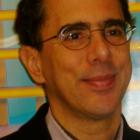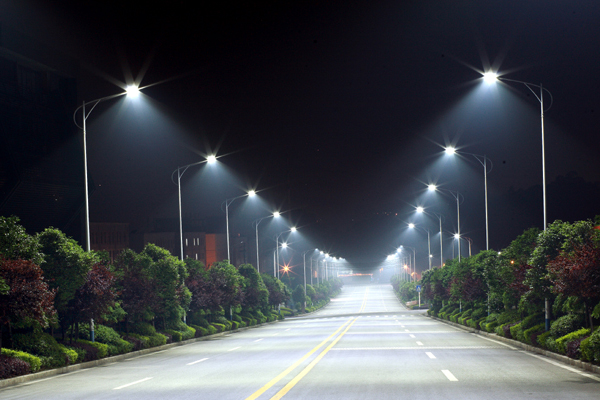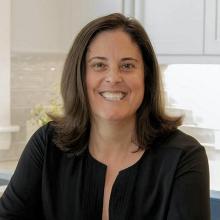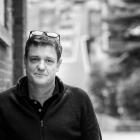LED-ing the Revolution
A Conversation with Fred Davis, Brian Chemel and George Woodbury about the savings potential with smart lighting systems.
The following interviewees are presenting their lighting expertise at BuildingEnergy 15,
Learn more about BuildingEnergy 15 here: http://nesea.org/be15

LEDs are the next best thing in energy efficient lighting, but so many building professionals still are “in the dark” about how to best use the technology. This quandary inspired energy-lighting expert Fred Davis to curate two lighting sessions at BuildingEnergy 15. I listened in on a conversation between Fred and two speakers, Brian Chemel of Digital Lumens and George Woodbury of LightSmart Energy, who are achieving energy savings of 80-90% with the use of smart controls coupled with LED technology.
 Fred: Most people at Building Energy aren’t lighting specialists. What are one or two key points that anyone who’s working on sustainable energy use, whether as a designer, engineer, program manager, or government official, should know about LED technology?
Fred: Most people at Building Energy aren’t lighting specialists. What are one or two key points that anyone who’s working on sustainable energy use, whether as a designer, engineer, program manager, or government official, should know about LED technology?
Brian: Everyone should know that the switch to LEDs as a light source is only a small part of the energy savings story. In certain situations, embedding micro-controllers and sensors into lighting systems really changes what’s possible: lighting becomes an integral part, perhaps a backbone, of building management.
George: I work mostly in outdoor lighting, and similarly to what Brian said, I’d say that streetlights aren’t just equipment to illuminate roadways. A streetlight is a piece of real estate that has power 24-7. So when you put controls on it you’ve got a communication network. A whole world of possibilities opens up to meet other needs.
Fred: Are you really achieving upwards of 80% savings on your projects?
George: Well, typical LED conversion of streetlights will achieve 60% savings or so. And yes, when you add controls, you can get above 80%.
Brian: Yes, we’ve done hundreds of facility retrofits that are achieving 80-90% savings with payback periods of 18-36 months. But it’s not because there’s someone onsite actively managing the system. The trick is in the software and the automation.
Fred: So does that mean that you don’t need an engineer onsite to operate these systems? Brian: The end-users for our systems are typically not very technically sophisticated. In fact, we never assume there’s an engineer on site after commissioning.
Brian: The end-users for our systems are typically not very technically sophisticated. In fact, we never assume there’s an engineer on site after commissioning.
George: There are two different approaches to controlled lighting. Some clients work with companies that provide the network and the software as a service; they set it up, train you how to use a web portal, and stand behind it to make sure everything works. Other clients want the system to reside on their own servers. That’s more complicated and does require you to have the staff to manage it.
I’ve seen too many school systems with very sophisticated energy management systems that no one knows how to operate.

Fred: What about cost effectiveness?
Brian: The savings are what get these projects done, but I also think it’s important to zoom out a little bit from the energy savings. The data these systems can generate and their ability to be tuned over time end up being as valuable as the raw savings if not more so.
George: Outdoor lighting falls into two basic categories. With metered lighting there’s always an opportunity. With unmetered street lighting it depends on the utility. Installing controls on an outdoor lighting system can nearly double the cost, so you need a tariff in place that provides the benefit for having controls. When you ask the utilities whether they will be adopting tariffs that support the use of controls, the answer is always a matter of when, not if. I have found that the investment is a fairly easy sell even in places that don’t yet have a tariff yet, -because the lifespan of these systems is twenty years and the tariffs will catch up.

Fred: What is your biggest challenge?
Brian: We’re a venture-backed startup and growing very rapidly.
A big question for us is what markets do we apply our technology to next? If the world is going in the direction of connected lighting, how do we get there?
George: For me the biggest challenge is the utility companies. They are very resistant to change and protective of their revenue stream. I’m going around from state to state, working to pass laws that require utilities to cooperate. That seems to be the only way we can achieve the full potential of smart control technology.
Learn more about BuildingEnergy 15: http://nesea.org/be15
Our Mission
NESEA advances sustainability practices in the built environment by cultivating a cross-disciplinary community where practitioners are encouraged to share, collaborate and learn.







Add comment